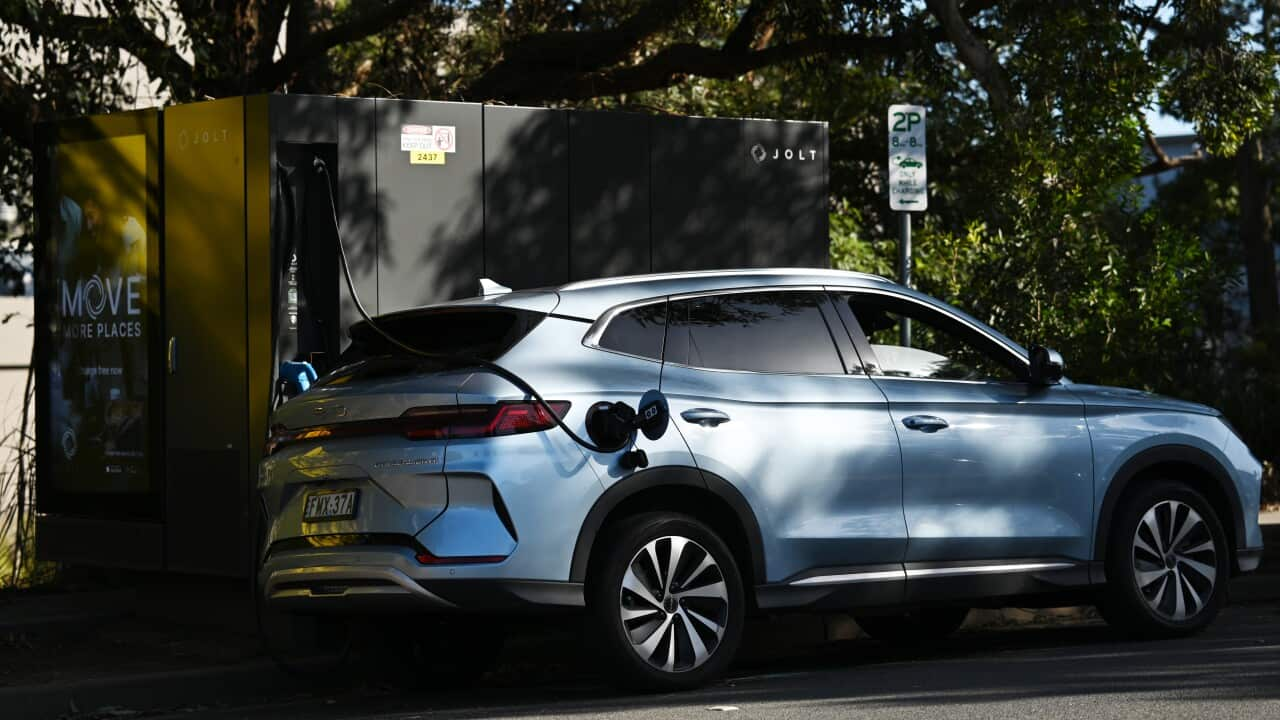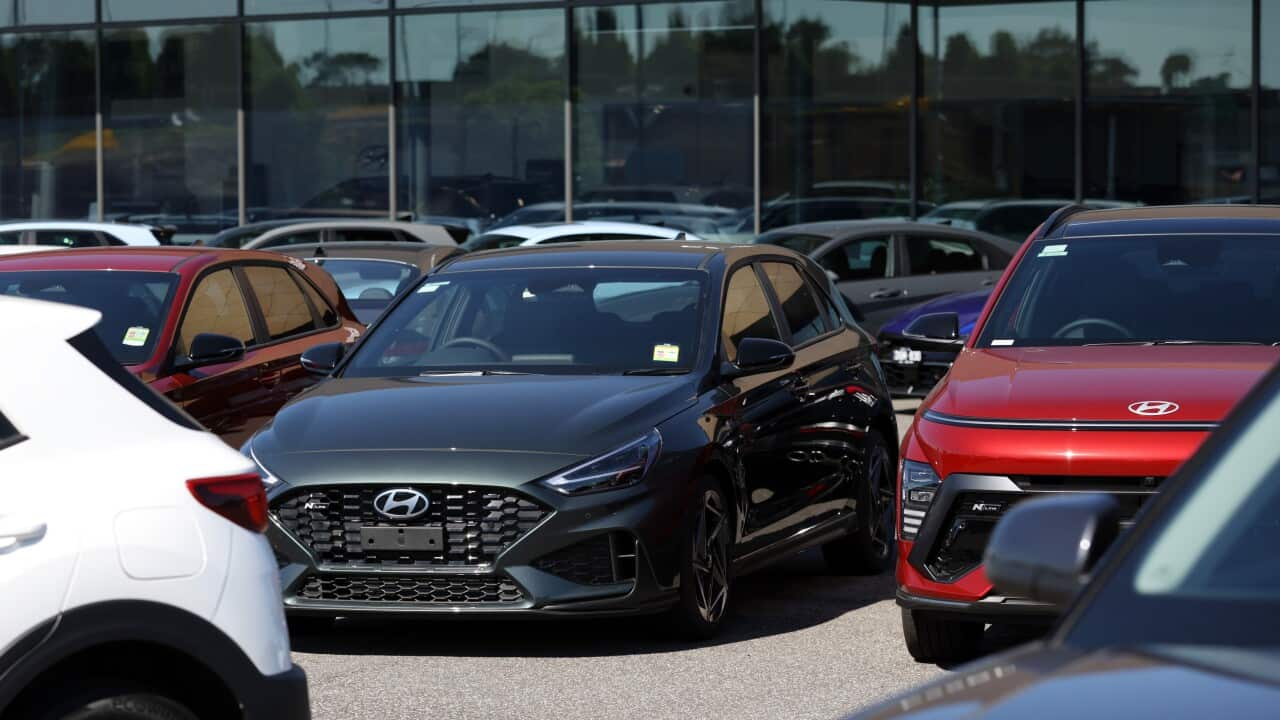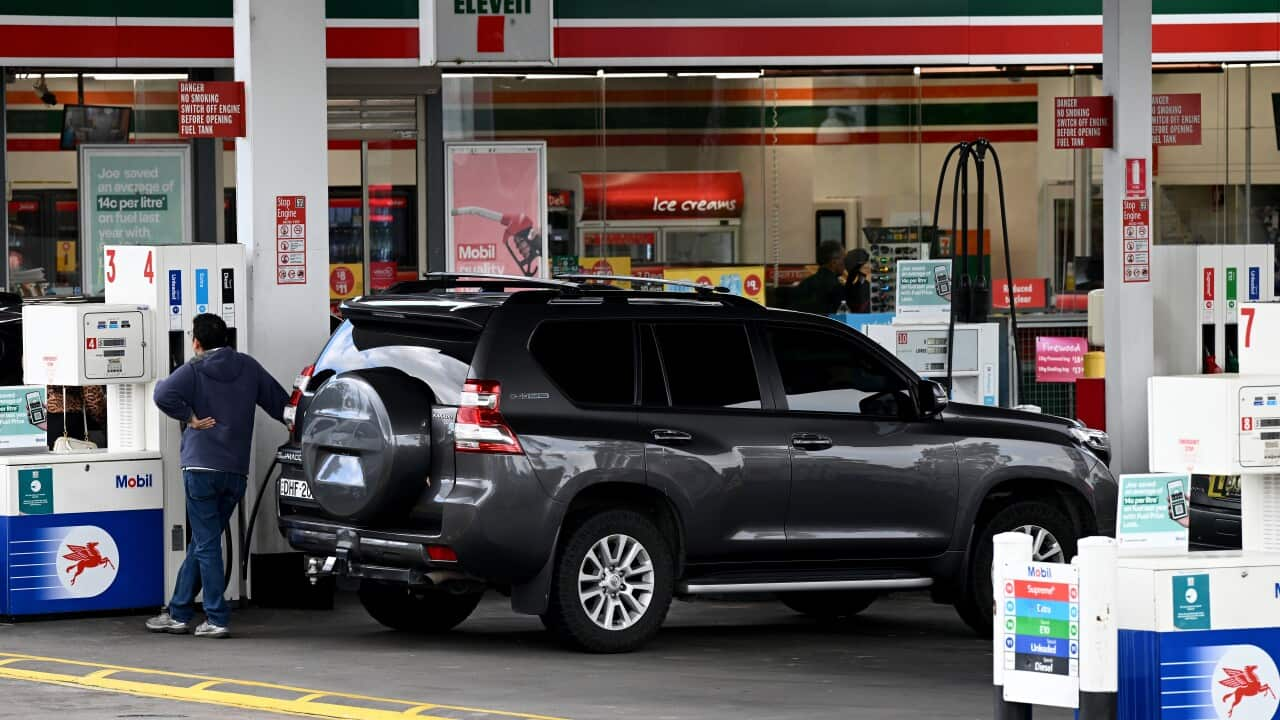The Coalition will back Australian families who "don't want or cannot afford" an electric vehicle (EV), vowing to scrap penalties for vehicle manufacturers in their latest cost of living pitch to voters.
It says the New Vehicle Efficiency Standard (NVES) for manufacturers, set to come into effect on 1 July, will drive up the price of a Toyota RAV4 by $9,700, and the cost of a Ford Ranger ute by $14,400.
Opposition leader Peter Dutton said if elected, the Coalition would repeal penalties due to apply to vehicle manufacturers that don't meet the standards, and will pursue vehicle emissions in a "responsible" way.
"We want vehicle emissions standards to be responsible. Of course, we want cleaner fuel. But I want Australians to be able to afford to live," Dutton said in Perth on Friday afternoon.
"That's why we're not going to allow Labor's ute-and-car tax. We're going to repeal it."

Opposition leader Peter Dutton has spruiked both his fuel excise cut and a change to fuel efficiency standards at a car dealership in Kalamunda, Perth. Source: AAP / Mick Tsikas
Prime Minister Anthony Albanese labelled the Coalition's policy "nonsensical", arguing it removes incentives for fuel-efficient cars.
"I find it extraordinary that Peter Dutton, who says he cares about the price of fuel, doesn't want people to have more fuel-efficient cars, which reduce the costs of filling up their car," Albanese told reporters in Darwin.
So, what is NVES, and how will it affect the price of vehicles?
What is the New Vehicle Efficiency Standard?
NVES was legislated by the government in 2024 and comes into effect on 1 July.
NVES sets a carbon emission target for a manufacturer's fleet and penalises vehicles polluting over that threshold, which encourages them to ship lower polluting vehicles, including hybrid and electric cars, to Australia.
The emissions targets become more stringent over the coming years while the industry adjusts, with eventual fines of $100 for every gram over the target to be paid from 2028.
Tony Wood, Energy and Climate Change program director at the Grattan Institute, told SBS News the scheme is designed to "encourage more efficient new vehicles" that use less petrol and produce fewer emissions.
He said the scheme is expected to drive better efficiency standards across petrol and diesel vehicles, as well as encourage more EVs into the market.
"What we're actually seeing is cleaner, more efficient and increasingly affordable cars," he said.
"Now, of course, that means that if you want to buy a vehicle that is neither of those — not clean or as efficient — then you will progressively be paying more."
Transport makes up 21 per cent of Australia's emissions, according to the Department of Climate Change, Energy, the Environment and Water. Two-thirds of these are due to passenger and light vehicles.
Wood questioned how the Coalition intended to achieve its net-zero emissions by 2050 target without imposing some penalties on the vehicle industry.
How does Australia compare to the rest of the world?
When the Albanese government unveiled its policy last year, it argued that Australia had become a dumping ground for less efficient petrol vehicles, ultimately costing voters more at the bowser.
Government analysis suggested manufacturers would import more efficient vehicles, which are already available in markets like the European Union, saving Australians an average of $1,000 a year.

The Electric Vehicle Council says the industry is changing, with more EVs and even a hybrid-ute now available to consumers at a cheaper price. Source: Getty / Ralf Hahn
"The US, UK and EU, they all have fuel efficiency standards for their vehicles," the Coalition's former environment minister Josh Frydenberg, who pursued vehicle efficiency standards, said in 2017.
"In fact, 80 per cent of the world's light passenger vehicle fleet has these standards."
Will this drive up the price of your ute or EV?
Tony Weber, chief executive of the Federal Chamber of Automotive Industries, said it supported a more "achievable" fuel efficiency standard.
The peak body argues the targets are "too stringent" and require "a very high proportion of EV sales", which does not reflect current consumer sentiments and preferences for vehicles such as utes.
He said the government needed to pursue "a sensible approach that delivers vehicles that consumers want, and in the timeframe that makes a meaningful difference to the CO2 outcome".

Aman Gaur, head of legal policy and advocacy at EVC, said many people thought utes could never be electric, but "we're seeing a really viable and cost-competitive option". Source: Supplied / BYD
However, the Electric Vehicle Council (EVC) said the policy is already working, pointing to an increase in the number of EVs available to consumers, with over 30 types now offered.
Aman Gaur, head of legal policy and advocacy at EVC, said this had driven down the cost of EVs, with models now available at a cost below $40,000.
It has also led to the introduction of Australia's first plug-in hybrid ute: The BYD Shark 6.
Gaur said many people thought utes could never be electric, but "we're seeing a really viable and cost-competitive option".
"The average Australian benefits because they get access to more competition," he told SBS News. "Prices go down, but then they [also] save money on their day-to-day running costs."
Gaur compared the benefits to an energy-efficient washing machine, which uses less electricity and drives down power bills. He said similarly, vehicle emission standards would reduce the amount of petrol used and offer cost of living relief for households.
"If manufacturers don't need to bring in more fuel-efficient petrol hybrid and electric cars, they can continue to bring in their most inefficient cars."



